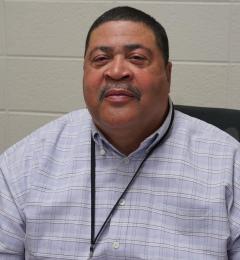The widely publicized crisis around student mental wellness is never far from the thoughts of Ben Pryor, assistant principal of a very large urban high school and president of AFSA Local 109, the Association of Supervisory and Administrative School Personnel of Prince George’s County, Maryland.
Since the COVID-19 pandemic, Pryor has been aware of an explosion of sadness among students. Discipline continues to deteriorate. Fed up, teachers are leaving. The crying need for mental health professionals has been virtually impossible to meet.
“School leaders can’t give up, we need to change the system,” said Pryor, who also serves as an AFSA general vice president and chairs the AFSA Resolution Committee 11, Addressing Social and Emotional Learning.
All these challenges existed before the pandemic, but they have become exponentially worse. In the midst of the pandemic, he points out, “the kids were hearing on the news how many people died every day. Some of them were losing their parents. They were scared.”
It is not that unusual these days to see actual breakdowns, he says. There are students who hardly talk at all. He adds, “A student will go into the bathroom and cry and not want to come out.”
Every school and district seem to be trying to do something about this, but this varies widely and much more needs to be done. Schools everywhere are asking for more psychologists, counselors and social workers. But there is an inadequate supply of these professionals. Many don’t want to go into education, where the pay is lower and the challenges greater than in private industry.
“Take my school district in Prince George’s County, Maryland,” he says. “We need about 200 psychologists, but we only have 100. There are 2,200 students in my school right now, and there are over 130,000 students in this county. Every student needs a place where they can be themselves and not be judged.”
Board approval is required for a school to hire a mental health professional. The process must be speeded up. In addition, schools may have to draw on mental health resources from outside. Sometimes, the recourse can be to partner with community mental health clinics or other nonprofits that offer mental health resources.
The social/emotional learning (SEL) curriculum is a mixed bag. Pryor’s impression is that few schools have introduced this type of instruction on a formal basis. “Because where is the time?” he asks. For the most part, he believes, SEL is being “squeezed into health class” a few times a month. That is when a free interchange about pain and anxiety can occur. “The kids need a safe space,” he says, and sometimes this is all there is, particularly if there aren’t enough mental health professionals onboard.
Awareness among educators is also uneven. “Some teachers are more empathetic than others,” he says, “Others are more focused on grades. Mental health awareness training is essential and principals can help set the tone for that in our schools all around this nation.”
AFSA is taking steps offering training and resources to help educate school leaders on what actions can take place every day in our school in making changes. As part of Mental Health Awareness Month, AFSA is kicking of its effort with online webinars and links to resources.
Another, less acknowledged element is at play in the current crisis. That is a continuing deterioration in school discipline that makes everyone in the building feel less safe.
“I believe schools need to be pulled back together,” he says. “To some degree, kids need to be pulled back.”
He believes that restorative justice is basically a sound approach to controlling the disproportionate punishment of marginalized students that often exacerbates the “school-to-prison pipeline.” But when nearly all consequences for bad and even dangerous behavior are eliminated, he says, “we are doing kids no favors. There are consequences in the real world and there need to be consequences for not attending any classes, threatening a teacher or assaulting another student. Otherwise, we’re selling the kids out. We’re supposed to teach them to be citizens.”
When he looks at the insights he’s gained from his colleagues on the AFSA committee, he is heartened. “I see that San Diego and New Hampshire have been addressing these mental health issues for a long time,” he says. “Their populations are very different from Prince George’s County.” They are learning from each other and developing less insular views.
Because of the cross-pollination, says Pryor, “We’ve begun to see where we’re going as a country.”
For more resources, visit here.


